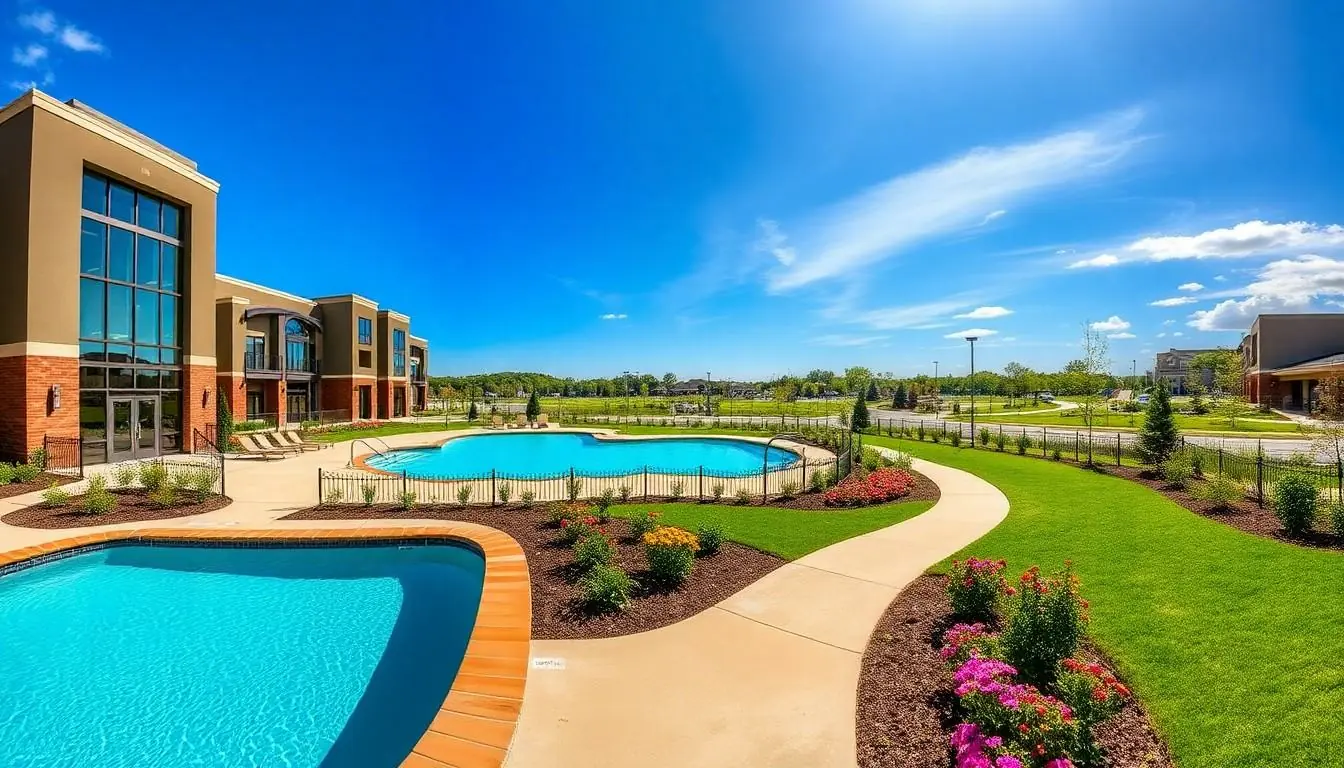In a world overflowing with information, finding reliable news can feel like searching for a needle in a haystack. Comprehensive news coverage is the superhero we didn’t know we needed, swooping in to save the day with a wealth of insights and perspectives. It’s not just about knowing what happened; it’s about understanding the how and why behind the headlines.
Imagine a buffet where every dish is more delicious than the last. That’s what comprehensive news coverage offers—tantalizing bites from politics to science, sprinkled with a dash of humor to keep things lively. It ensures readers aren’t just informed but also entertained, making the news feel less like a chore and more like a delightful conversation. With the right coverage, staying updated can be as enjoyable as binge-watching your favorite show—without the guilt of a cliffhanger.
Table of Contents
ToggleUnderstanding Comprehensive News Coverage
Comprehensive news coverage provides a complete view of current events, offering insights that go beyond surface-level reporting. Readers gain a better understanding of the news landscape through this thorough approach.
Definition and Importance
Comprehensive news coverage encapsulates detailed reporting that includes various aspects of stories. It emphasizes accuracy, relevance, and context, allowing audiences to grasp the significance of news events. Recognizing trends and implications becomes easier when news is presented in such a manner. An informed public benefits society by promoting civic engagement and awareness. In a world overrun with information, this kind of reporting fosters critical thinking and sound decision-making.
Key Elements of Comprehensive News Coverage
Several key elements define comprehensive news coverage. First, in-depth analysis helps contextualize events, offering multiple perspectives. Second, diversity in sources enhances credibility, ensuring a balanced view of issues. Third, engaging narratives draw audiences in, making complex subjects approachable. Fourth, accessibility is crucial, as it allows news to reach a wider audience through various formats. Each of these elements works together to enrich the news experience, empowering readers to make informed choices.
The Role of Media Outlets

Media outlets play a crucial part in delivering comprehensive news coverage. They shape public understanding of current events through various channels.
Traditional Media vs. Digital Media
Traditional media includes newspapers, television, and radio. These platforms often focus on investigative journalism, providing in-depth insights into stories. Digital media, on the other hand, encompasses websites, blogs, and social media platforms. These formats enable rapid information sharing and real-time updates. Traditional media frequently maintains strict editorial standards, while digital media may prioritize speed over accuracy. Both types of media hold significant influence over public discourse. Audiences often turn to traditional sources for trustworthiness, whereas digital outlets offer diverse perspectives and immediate access to breaking news.
The Impact of Social Media on Coverage
Social media profoundly impacts news coverage. Platforms like Twitter and Facebook enable users to share stories instantly, expanding their reach. News outlets leverage these platforms to connect with audiences more personally, creating interactive experiences. Instant feedback through comments or shares allows readers to engage directly with reporting. User-generated content enriches coverage, providing additional viewpoints and firsthand accounts of events. However, the risk of misinformation increases as unverified news can spread swiftly online. Balancing information accuracy with rapid dissemination remains a challenge for all media outlets.
Challenges in Achieving Comprehensive Coverage
Achieving comprehensive news coverage faces several challenges that can hinder effective reporting. Addressing these obstacles is crucial for maintaining reliable news sources.
Bias and Representation Issues
Bias affects the portrayal of events and issues. Media outlets sometimes emphasize specific perspectives over others, leading to skewed narratives. Underrepresentation of minority voices ensures that critical viewpoints are overlooked. These biases can distort public perception, leaving audiences with an incomplete understanding of events. To combat this, diverse voices and inclusive reporting practices must be prioritized. Only by actively seeking varied viewpoints can media outlets foster a balanced and comprehensive news environment.
Speed vs. Accuracy in Reporting
Speed often takes precedence over accuracy, especially in the digital age. News outlets frequently rush to publish information, resulting in errors or incomplete stories. Real-time updates are valuable, yet they may compromise the quality of information provided. Journalists face pressure to deliver timely news, often diminishing thorough fact-checking processes. Balancing these competing demands is essential for maintaining credibility. Prioritizing accurate reporting alongside timely dissemination will enhance overall news quality and audience trust.
Strategies for Enhancing Comprehensive News Coverage
Enhancing comprehensive news coverage requires targeted strategies that address various aspects of journalism. Effective methods include collaborative efforts and leveraging advancements in technology.
Collaborative Journalism
Collaborative journalism fosters partnerships between media outlets, local organizations, and community members. These collaborations expand coverage and ensure diverse perspectives are included. Newsrooms can share resources and expertise when working together, enhancing the depth and accuracy of reporting. Engaging citizens as contributors also creates a more informed public while bridging gaps between journalists and communities. This approach improves representation by amplifying underrepresented voices, leading to a richer news landscape.
Leveraging Technology and Analytics
Technology significantly transforms news coverage by enhancing reach and engagement. News outlets can utilize social media platforms to disseminate content quickly and interactively. Data analysis tools provide insights into audience preferences, helping journalists tailor stories to meet public interests. Real-time analytics enable immediate feedback on coverage effectiveness, allowing for timely adjustments. Additionally, multimedia tools such as video and podcasts create diverse content formats that engage various audiences. Embracing these technologies ensures that news remains relevant and accessible in an evolving information landscape.
Comprehensive news coverage serves as a vital resource in navigating the complexities of today’s world. By offering diverse perspectives and in-depth analysis, it empowers audiences to understand the nuances behind current events. This approach not only enriches the news experience but also fosters informed civic engagement.
As media continues to evolve, the commitment to accuracy and representation remains paramount. Embracing collaborative journalism and leveraging technology will ensure that news outlets can meet the demands of a dynamic information landscape. Ultimately, comprehensive news coverage is essential for cultivating an informed society ready to engage with the world around them.







